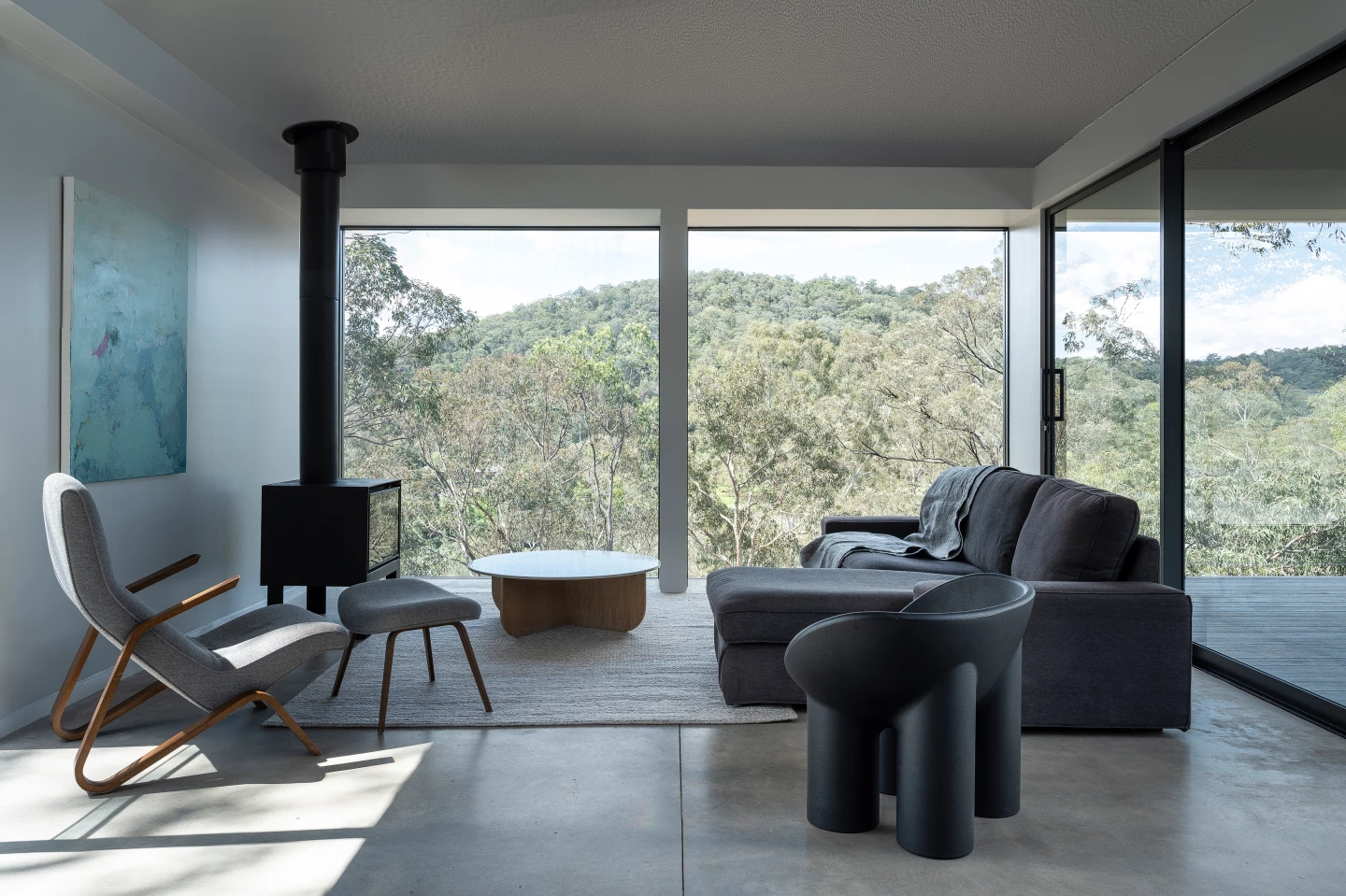From tiny houses to student housing, we continue to be impressed at what architects can make from the humble shipping container. Colo Crossings, from Australian studio Benn + Penna, is definitely one of the better examples of container-based architecture we've seen in a while and takes the form of an attractive solar-powered rural retreat arranged around a plunge pool.
Colo Crossings is located on a steep slope in a bend of New South Wales' Colo River, approximately 100 km (roughly 62 miles) northwest of Sydney.
Structurally, the home consists of four heavily modified shipping containers which are raised above the rocky ground on a steel support structure. Two of the containers have been connected to each other to create an open plan living, kitchen, and dining area, which also contains a bathroom, while another pair form the home's three bedrooms, plus a second bathroom.
The living and bedroom areas are situated on either side of the plunge pool and connected by a glazed corridor, while elsewhere lies a deck offering views of the landscape. The interior decor is tastefully handled throughout and thanks to its open layout and finished walls, Colo Crossings doesn't really resemble a typical container-based house. It has concrete floors and a utilitarian plywood kitchen, while its generous glazing has been situated to frame the view but not unduly heat the interior. The house is warmed by both underfloor heating and a wood-burning stove.

Whenever we cover shipping container-based architecture, we have to mention the frankly terrible performance of the metal boxes in both hot and cold weather. However, Benn + Penna has addressed this by installing lots of insulation.
"The existing sandstone bedrock formed a natural footing which the geotechnical and structural engineers worked with to support the building in an area prone to landslides," explained the firm. "The steel structure anchors into the rock, with exposed members as an expression of the structure; designed to withstand its context for years to come. Internally, concrete flooring and a plywood kitchen nod towards the raw, untampered surrounds. The shipping container walls and the roof are double insulated against the high diurnal range of the area, and a new concrete slab was poured into each container to facilitate thermal mass through multiple north-facing windows."
Colo Crossings gets water from a rainwater collection system and power comes from a solar panel setup, though it also has a grid-based hookup just in case it's needed.
Source: Benn + Penna











